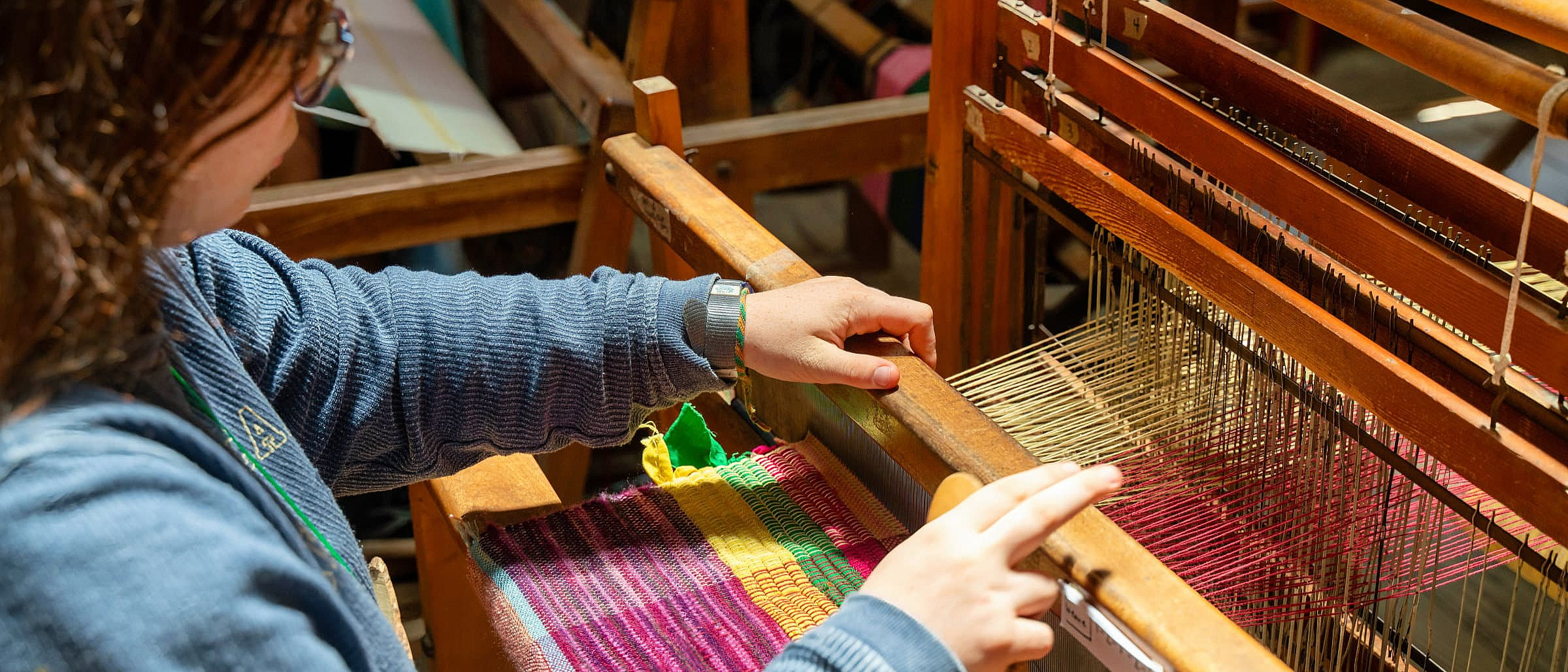Weaving, the creation of textiles or cloth by interlacing materials, is one of the original craft activities taught at Rockbrook. From a beginner’s potholder project to using a full-sized floor loom, there are many types of weaving camp projects that campers can try at Rockbrook.
Weaving for Girls
Weaving is one of the original camp activities at Rockbrook, popular with the very first girls in 1921 and right up to today.
Camp girls use colorful yarns, threads, and other flexible fibers to create beautiful alternating patterns in their weavings.
Weave something and take it home as a keepsake! Small or large, simple or complex, woven projects are fun to make.
Learning to Weave at Camp
Warp, weft, and treadle! You may have never heard these words or know anything about weaving, but don’t worry camp is a perfect place to learn.
Our fiber arts staff will help you get started, design a weaving pattern, and get you comfortable with the techniques used to create your project.
From finger weaving, to frame and lap looms, to table-top and full-sized floor looms, there’s always a new weaving technique to learn.
All Kinds of Weaving
Using these different weaving techniques, girls can weave tapestries, belts, rugs, placemats, and all sorts of colorful cloth.
Basket weaving is another option. Often done outside on a porch or sitting next to a mountain stream, campers use flexible reed and cane to build working baskets.
Strips of t-shirt material, sometimes beads and tinsel, and natural vines can all be woven into a project. Weaving is also a chance to show your creativity.
Summer Camp Weaving
Our weaving classes take place in a 19th century log cabin called Curosty. In a catalog from the 1930’s Curosty is described as: “a place where the lore of the mountains is preserved in the indigenous craft of weaving.”
Finger weaving is one of the simplest types of weaving, using only yarn or “loopers and your fingers to make things like necklaces and belts. These accessories are great for all of the dress up opportunities at Rockbrook! Another very popular weaving project is to use the potholder looms to create colorful potholders and practice weaving techniques.
Flat lap looms allow girls to really understand how “warp” and “weft” work. The warp threads are the tight threads strung across the loom, providing structure for the fabric. The weft threads are the pieces of colorful yarn that get drawn through the warp, usually creating patterns.
Girls may also get a chance to do basket weaving, usually done outside where the girls can place their feet in the cool stream as they work.
Once campers have mastered the basics, they can try larger and more complicated projects. Rockbrook has table looms and wide standing Leclerc floor looms. The girls are taught different geometric patterns that are created by lifting groups of warp fibers as the weft is passed between them. Complimentary colors are selected for the thread and yarn, helping to create a beautiful geometric cloth. An exciting part of weaving is seeing how each row can allow a new pattern to emerge. As a traditional activity that is not frequently taught, Rockbrook girls get a special chance to take part in a rewarding craft that has a rich history. For some girls, weaving at camp can begin a lifelong hobby that allows their creative talents to shine.











